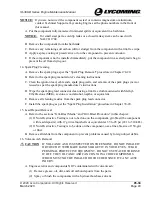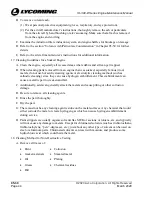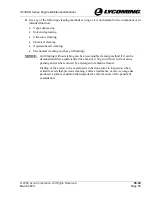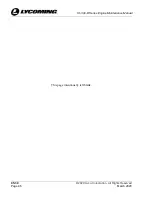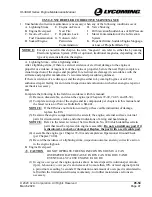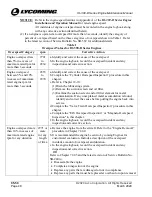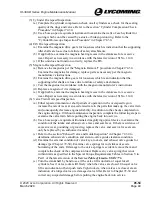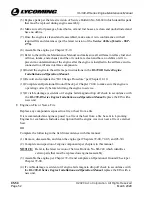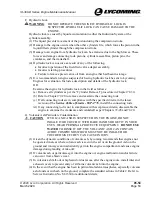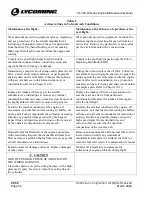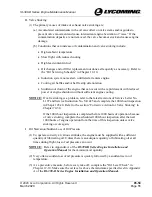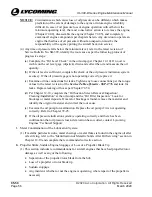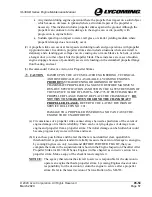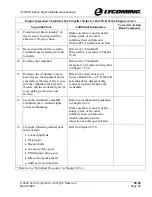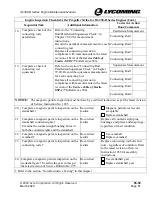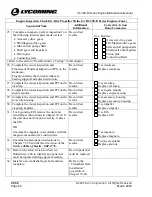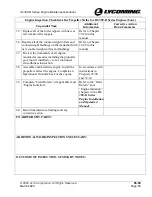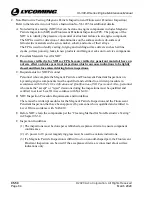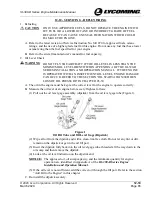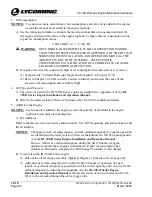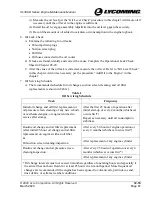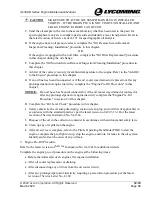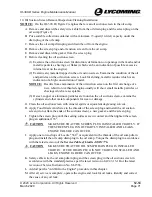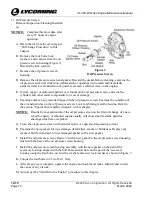
IO-390-D Series Engine Maintenance Manual
© 2020 Avco Corporation. All Rights Reserved
05-50
March 2020
Page 57
IO-390-D Series Engine Maintenance Manual
•
Any incident during engine operation where the propeller has impact on a solid object
which causes a decrease in rpm and where a structural repair of the propeller is
necessary. This incident includes propeller strikes against the ground. Although the
propeller can continue to turn, damage to the engine can occur, possibly with
progression to engine failure.
•
Sudden rpm drop on impact to water, tall grass, or similar yielding medium where
propeller damage does not usually occur.
(2)
A propeller strike can occur at taxi speeds and during touch and go operations with propeller
tip ground contact. In addition, propeller strikes also include situations where an aircraft is
stationary and a landing gear collapse occurs causing one or more blades to be bent, or where
a hangar door (or other object) hits the propeller blade. These instances are cases of sudden
engine stoppage because of potentially severe side loading on the crankshaft propeller flange,
front bearing, and seal.
(3)
Recommended Corrective Action for Propeller Strikes
CAUTION
BASED UPON THE ACCUMULATED ENGINEERING, TECHNICAL
AND HISTORICAL DATA AVAILABLE, LYCOMING ENGINES
PROHIBITS
STRAIGHTENING OR GRINDING OF BENT
CRANKSHAFT PROPELLER FLANGES TO RESTORE MAXIMUM
RUN-OUT SPECIFICATION AS NOTED IN THE LATEST REVISION OF
THE SERVICE TABLE OF LIMITS - SSP-1776. IF THE CRANKSHAFT
PROPELLER FLANGE IS BENT, REPLACE THE CRANKSHAFT.
DO
NOT TRY TO STRAIGHTEN OR GRIND THE CRANKSHAFT
PROPELLER FLANGE.
REFER TO THE LATEST REVISION OF
SERVICE BULLETIN NO. 201.
DAMAGE TO A PROPELLER IS SERIOUS AND CAN CAUSE THE
ENGINE TO BE UNAIRWORTHY.
(a)
Circumstances of a propeller strike cannot always be used as predictors of the extent of
engine damage or its future reliability. There can be varying degrees of damage to an
engine and propeller from a propeller strike. The initial damage can be hidden but could
become progressively worse with time and wear.
(b)
Given these possibilities and the fact that there is no identified clear, quantifiable
threshold limit or gradient standard to reliably measure the extent of damage to an engine,
Lycoming Engines can only recommend BEFORE FURTHER FLIGHT, that you
complete the tasks in the sequential order shown in the Engine Inspection Checklist After
Propeller Strike for IO-390-D Series Engines (in this chapter) as corrective action for a
propeller strike. Make a copy of the checklist and complete it.
NOTICE:
The agency that returns the aircraft to service is responsible for the decision to
operate an engine that had a propeller strike. Lycoming Engines does not take
responsibility for the decision to return the engine to service after a propeller
strike. Refer to the latest revision of Service Bulletin No. SB-533.

